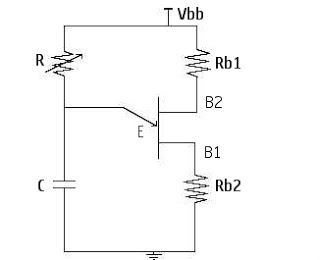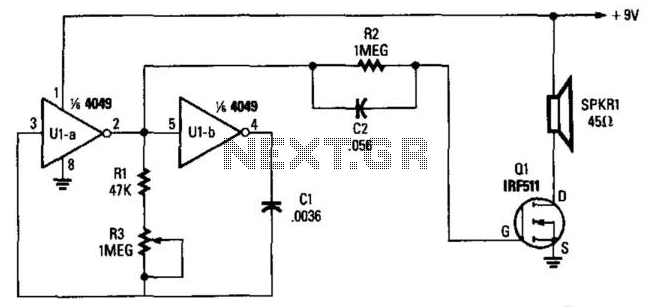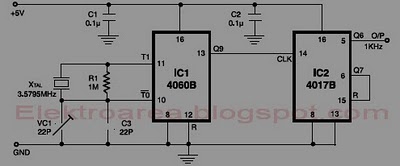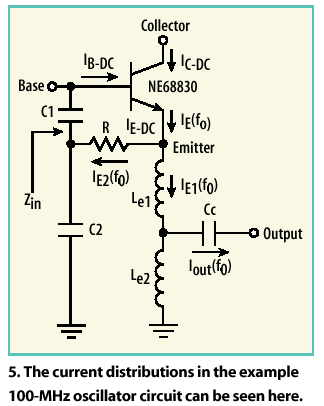
UJT RELAXATION OSCILLATOR

At the point Vp, the emitter triggers and turns the UJT (Uni-Junction Transistor) ON. Up to this point, the emitter is isolated and does not conduct, resulting in no current conduction between Base1 and Base2.
The operation of the Uni-Junction Transistor (UJT) is characterized by its unique structure and behavior, which is particularly useful in timing and triggering applications. The UJT consists of a single n-type semiconductor bar with two p-type regions, referred to as Base1 and Base2. The emitter terminal is connected to the n-type material and plays a crucial role in the device's operation.
When the voltage at the emitter reaches a specific threshold, denoted as Vp, the UJT becomes active. Prior to reaching this voltage, the emitter remains isolated from the two bases, preventing any current flow. The isolation ensures that the device remains in a non-conductive state, which is essential for its function in timing circuits and oscillator applications.
Once the voltage at the emitter exceeds the threshold value, the UJT turns ON, allowing current to flow between the emitter and Base1 or Base2. This transition marks the beginning of the conduction phase, where the UJT can be used to trigger other devices or control circuits. The characteristics of the UJT, including its negative resistance region, allow it to oscillate or switch, making it a valuable component in various electronic applications.
In practical applications, the UJT can be used in relaxation oscillators, pulse generators, and timing circuits. The precise control of the conduction state based on the emitter voltage makes it an essential component in designing circuits that require timing and triggering functionalities. Understanding the behavior of the UJT during the transition from non-conductive to conductive states is crucial for engineers when integrating this device into electronic systems.At the point Vp the Emitter triggers and TURN the ujt ON, until this point ; the emitter is isolated(doesnt conduct) from the transistor so no Current Conduction occurs between Base1 and Base2. 🔗 External reference
The operation of the Uni-Junction Transistor (UJT) is characterized by its unique structure and behavior, which is particularly useful in timing and triggering applications. The UJT consists of a single n-type semiconductor bar with two p-type regions, referred to as Base1 and Base2. The emitter terminal is connected to the n-type material and plays a crucial role in the device's operation.
When the voltage at the emitter reaches a specific threshold, denoted as Vp, the UJT becomes active. Prior to reaching this voltage, the emitter remains isolated from the two bases, preventing any current flow. The isolation ensures that the device remains in a non-conductive state, which is essential for its function in timing circuits and oscillator applications.
Once the voltage at the emitter exceeds the threshold value, the UJT turns ON, allowing current to flow between the emitter and Base1 or Base2. This transition marks the beginning of the conduction phase, where the UJT can be used to trigger other devices or control circuits. The characteristics of the UJT, including its negative resistance region, allow it to oscillate or switch, making it a valuable component in various electronic applications.
In practical applications, the UJT can be used in relaxation oscillators, pulse generators, and timing circuits. The precise control of the conduction state based on the emitter voltage makes it an essential component in designing circuits that require timing and triggering functionalities. Understanding the behavior of the UJT during the transition from non-conductive to conductive states is crucial for engineers when integrating this device into electronic systems.At the point Vp the Emitter triggers and TURN the ujt ON, until this point ; the emitter is isolated(doesnt conduct) from the transistor so no Current Conduction occurs between Base1 and Base2. 🔗 External reference





